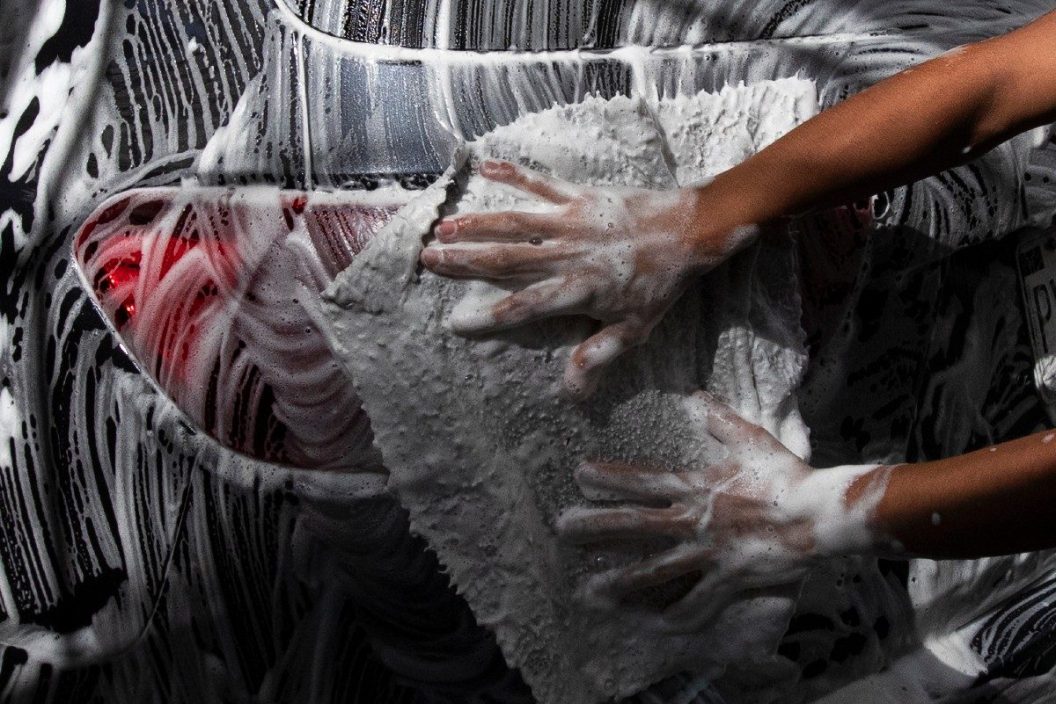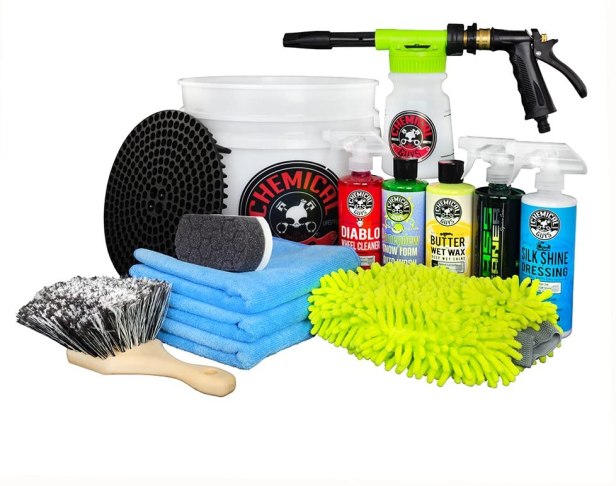There's really nothing like a nice, fresh, shiny, clean car. The way the car's paint gleams in the sunlight. The freshly swept upholstery. The lack of trash jangling around your feet whenever you brake. Car owners love a freshly detailed car, and for good reason: It's absolutely awesome to drive a clean car.
A lot of us run to the touchless automatic car wash. It's awfully convenient. You don't have to get out of your car. They take credit cards. But, you have to pay extra for a spot-free rinse, and you still have to clean out the inside at a self-serve bay, so is it really worth it?
There are self-serve car washes, too. Again, you're kind of limited on what products are available to you, or bring your own. That's like using your own shampoo at an upscale hotel. Who even does that?
What if I told you it wouldn't be that stressful to build your own do-it-yourself car wash, right at home? As in, you would have a self-service car wash right in your own driveway or carport. Go ahead and tell me to shut the front door, but read on to learn how to build a DIY car wash.
What All Do I Need for a DIY Car Wash?
We get it: There's an overwhelming amount of car cleaning products on the market, and if you haven't bought them before, it's a little intimidating. After all, when you go to the automatic car wash, you have pink, blue, yellow, and white foam. How are you supposed to know what's the protectant and what's the pre-soak?
The very first step of creating your own at home DIY car wash is to evaluate your car. This may seem too obvious, but there's a reason for this: The grime on your car tells you what kind of car wash process you need.
Do you drive a Jeep Wrangler with a minimum of three inches of caked-on mud and sand? Or, do you have a brand new Corvette that you want to keep so mirror-clean that you can see your nose hair in your reflection? Different levels of clean will require different cleaning products.
You'll want to wash the wheels, the windows, and the body. Generally speaking, each area will require a different cleaner. The cleaner typically used on wheels may damage your car's paint, and any cleaning products with conditioning agents will streak up your windows or wreck your car window tinting.
Then again, new and exciting products come on the market all the time. Therefore, the best advice for choosing the right cleaning products is to read the label in detail. Is it a foaming product, or do you add it to water? Do you need a buffer, or will a soft cloth suffice? Make sure you know what a product can and cannot touch before you take it home.
You'll also need your trusty hose. Make sure it reaches all the way to your wash area before you get too invested in this process.
You'll want to have a few clean rags on hand, too. A common myth is that you can use any old rag for washing your car, but you want to make sure the rag you use won't tear up the clear coat or your car's paint job. That's what makes chamois and microfiber rags the choice of DIY car washers everywhere.
I'm Just Washing the Wheels
Many people subscribe to the "three bucket" school of car washing. This tested-and-true system involves one bucket for wheel-cleaning solution, one bucket for clean water, and one bucket for suds for the body of your car.
For the wheel washing part of this exercise, you'll just need the bucket that includes the wheel-cleaning solution.
One important rule when washing the wheels is keeping the soap away from your tires and paint job. The soap won't necessarily hurt the tires, but if it isn't fully rinsed, it can get on the body of the car easily.
The Clean Truth
In fact, rinsing is one of the most important steps of any of the stages of washing your car.
Ideally, you'll rinse before and after applying cleaner. This helps remove any grime, goo, or mud before you apply the cleaner. If you start scrubbing before you rinse, you run the risk of dragging grit particles across the body of your car, which is a great way to scratch the clear coat. Instead, rinse first to get the majority of the big chunks off of your car before the scouring begins.
Be Clear About Windows
You would think that all glass cleaners would be created similarly, but this is not true when it comes to automotive glass. Make sure you use a cleaner that doesn't contain ammonia, as it can damage your car window tinting. Again, use a very soft cloth, because the only way to get tough streaks off is to work at it.
Maintaining a Hot Body
Remember: Start with a rinse. This will help you identify any chips, dings, scratches, or rust that might have been hiding under mud, so you don't accidentally make it worse. You might need to direct a little high-pressure blast at some of the thicker grime, but don't blast off your paint job. Rinse until you can see your car's paint job equally in all spots. Don't forget the headlights.
This is where those other two buckets come into play. Fill one bucket with the sudsy cleaner you've chosen for your car. The other bucket should just be clean water. As you lather your car up with your chamois or micro fiber rag, pause to dip it in the clean water from time to time. This will ensure you don't transfer grit or really rub it into your car's surface.
Once you've lathered up the car, rinse according to the directions on the product you have chosen. Dry your car with your soft cloth to prepare it for the waxing step. Again, don't forget the headlights.
Wax On, Wax Off
Waxing your car has often been considered a vanity trick, but it's actually helpful for the long-term life of your vehicle. Wax can protect your vehicle from harmful UV rays, as well as damage from pollen, bird poo, and other naturally occurring paint removers.
A clay bar can help you remove old wax build-up or cranky blemishes. Some lighter scratches can potentially be filled with wax. If you want that truly reflective shine, you'll want to invest in a buffing tool and some heavy-duty polish.
Keeping a spray detailer product in your car with a soft rag is a great way to keep your vehicle clean in between your DIY car washes. Of course, you can really step up your game with one of those "New Car" air fresheners from the gas station, but that's completely optional.
With just a few rags, buckets, and cleaning products, you can recreate the magic of the wash bays right in your own driveway. Just don't be afraid to rinse, and don't forget the headlights.
Products featured on Alt_driver are independently selected by our editors. However, when you buy something through our links, we may earn a commission.
This post was originally published on April 26, 2021.

